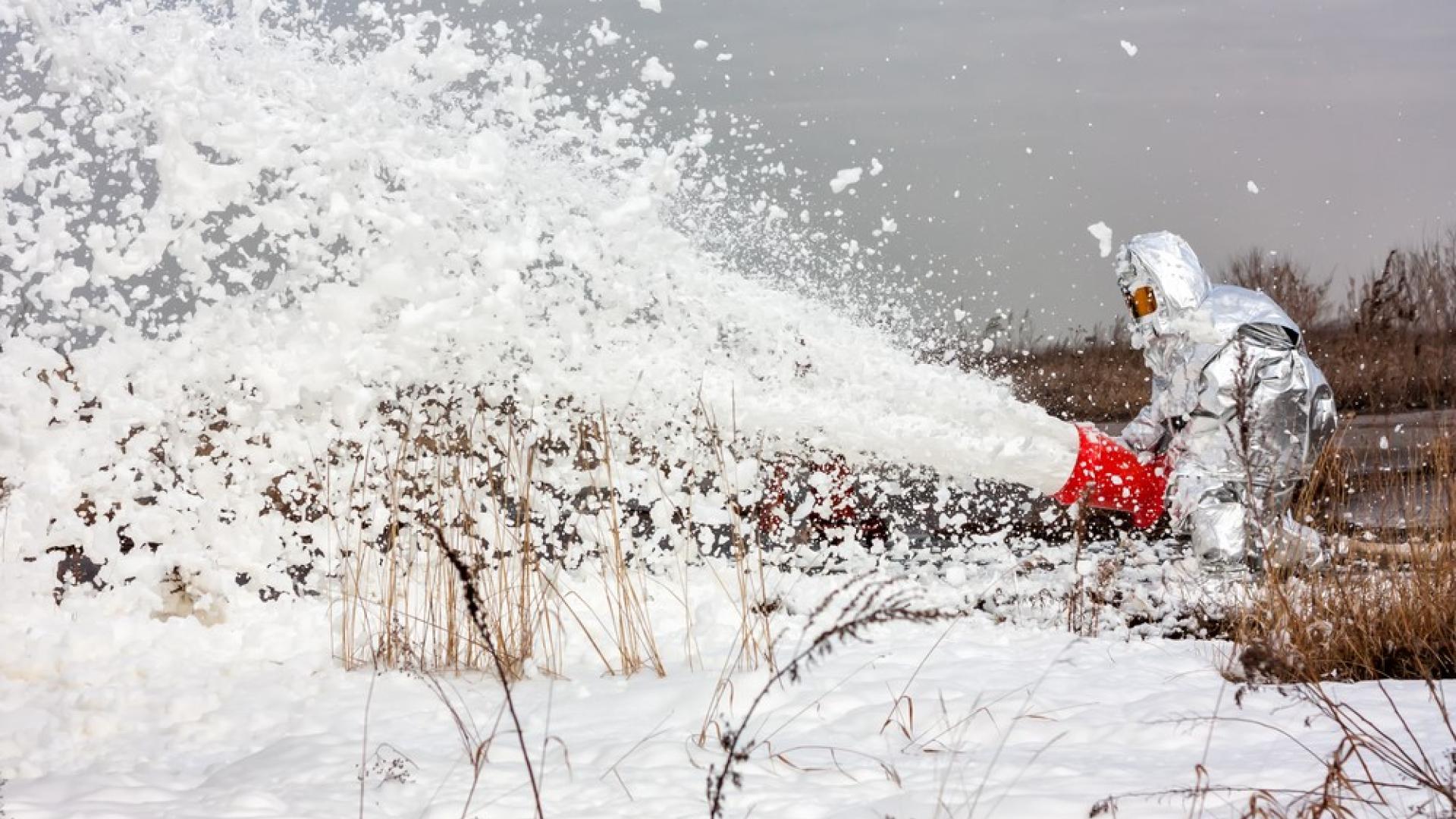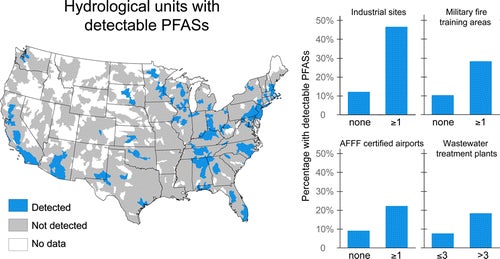
Likely Toxic PFAS Contamination Found at 2,501 facilities Around the US
Mark Olalde / Palm Springs Desert Sun
(April 9, 2020) — The Environmental Working Group released a new analysis on Thursday that identified 2,501 industrial facilities around the country that are likely releasing a lightly regulated class of toxic chemicals into the environment in every state and Puerto Rico.
The chemicals are known as PFAS — which stands for per- and polyfluoroalkyl substances — and have been linked to cancer, immune system deficiencies and other health issues. According to the US Food and Drug Administration, there are nearly 5,000 different types of PFAS, which are commonly used in firefighting foam and to make nonstick products.
“In some ways, it’s kind of like the pandemic we’re dealing with right now,” said Rep. Harley Rouda, D-Calif., who introduced the PFAS User Fee Act last year to call for manufacturers to pay into a trust fund to clean up this pollution. “If you test, you will find that you have issues with PFAS chemicals in every single district in the United States.”
In recent years, the military has emerged as a focus of cleanup efforts because of the chemicals’ use to fight fires on bases. But according to EWG, regulators and researchers are gaining a better understanding of just how many sources of contamination exist around the country.
“These facilities include chemical companies that make PFAS, manufacturers that use PFAS in their manufacturing processes and companies that use PFAS to coat their products,” said Scott Faber, EWG’s senior vice president for government affairs.
The environmental nonprofit’s analysis found more than 100 sites in California that were potentially discharging PFAS into air or water in the process of manufacturing sheet metal for planes, paint, semiconductors, petroleum products and numerous other goods.
Many of these sit clustered in the Los Angeles metropolitan area. Several sites that are believed to be releasing PFAS were found farther east near Riverside and San Bernardino.
EWG and some politicians accused the US Environmental Protection Agency of falling asleep at the wheel and failing to police industries that have been producing these chemicals since the 1940s.
“We’ve seen a systematic approach by the Trump administration to decimate the EPA’s obligations under the legislation that has previously been passed,” Rouda said.

In February 2019, the EPA unveiled its PFAS Action Plan to begin addressing contamination. This February, the EPA published an update, which said it was partnering on cleanup efforts in 30 states and Washington, D.C., and that it was making $15 million available for more research.
“By prioritizing our work under the Action Plan, we are delivering on President [Donald] Trump’s commitment to protect the health and well-being of communities across the country that are working to address PFAS,” EPA Administrator Andrew Wheeler wrote in the update.
EWG — which contends that the EPA’s maximum PFAS standard of 70 parts per trillion is much too high — still found samples from about 30 water systems in California with PFAS levels above the agency’s guidelines.
While the fight continues over where to set safe drinking water standards, some politicians and environmental organizations argue that more needs to be done to push cleanup costs back onto the manufacturers who produced these chemicals.
Rep. Chris Pappas, D-N.H., had proposed a bill to set deadlines for the EPA to write new PFAS rules. He joined with EWG and Rouda to call for liability to stay with industry.
“I don’t believe that the ratepayers in the water district, that local taxpayers should be picking up the tab to treat their groundwater that’s been contaminated by this industrial polluter,” he said.
Rouda and Pappas both suggested that PFAS cleanup could be partly funded in the fourth or fifth phases of the coronavirus relief packages, as Congress’ attention turns to doling out money for infrastructure, including water systems.
Mark Olalde covers the environment for The Desert Sun. Get in touch at molalde@gannett.com, and follow him on Twitter at @MarkOlalde.
Posted in accordance with Title 17, Section 107, US Code, for noncommercial, educational purposes.